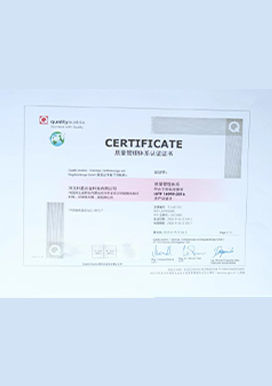- Phone:+86-17331948172 +86-0319-8862898
- E-mail: inquiry@puxingclamp.com
Oct . 16, 2024 12:11 Back to list
Electrolytic Methods for Cleaning Steel Strips and Enhancing Surface Quality
Electrolytic Cleaning of Steel Strips A Modern Approach to Surface Treatment
Electrolytic cleaning is a vital process in the manufacturing and processing of steel strips, especially in industries where surface quality and cleanliness are paramount
. This electrochemical method has gained prominence due to its efficiency, environmental benefits, and ability to enhance the properties of the steel surface.The process of electrolytic cleaning involves the use of an electrical current to remove contaminants from the surface of steel strips. This is typically achieved by immersing the steel in an electrolyte solution, often composed of diluted sulfuric acid or sodium hydroxide, which acts as a conductive medium. When an electric current is applied, ions in the electrolyte solution migrate toward the steel surface, reacting with the contaminants and leading to their removal. This method is especially effective in eliminating oxides, oils, and other organic and inorganic contaminants, which are common in steel processing.
One of the main advantages of electrolytic cleaning is its ability to provide uniform cleaning across the entire surface of the steel strip. Unlike traditional mechanical cleaning methods, which can cause surface damage or leave residue, electrolytic cleaning is a gentle yet effective approach. The controlled nature of the process minimizes the risk of introducing defects or altering the material properties of the steel, making it suitable for high-quality applications.
Another significant benefit of electrolytic cleaning is its environmental friendliness. Traditional cleaning processes often rely on harsh chemicals and generate substantial waste, posing environmental risks. In contrast, electrolytic cleaning uses water-based or less hazardous solutions, resulting in reduced ecological impact. This is particularly important as industries face increasing pressure to adopt sustainable practices. The closed-loop systems employed in electrolytic cleaning further enhance sustainability by minimizing waste and recycling spent chemicals.
Moreover, electrolytic cleaning enhances the surface characteristics of steel strips, significantly improving their performance in subsequent processing steps such as welding, painting, and galvanizing. The removal of surface oxides and contaminants allows for better adhesion of coatings and improved mechanical properties. This is crucial in industries like automotive and construction, where the integrity and lifespan of the material are essential.
electrolytic cleaning steel strip

The application of electrolytic cleaning is diverse, spanning various sectors. In the automotive industry, for instance, manufacturers leverage this method to prepare metal surfaces for coatings, ensuring a flawless finish that meets stringent quality standards. Similarly, in the production of high-tech components, where precision is critical, the use of electrolytic cleaning guarantees that surfaces are free from imperfections that could compromise functionality.
Despite its advantages, electrolytic cleaning does require careful control of several parameters, including electrolyte concentration, temperature, and current density. Deviations from optimal conditions can lead to inadequate cleaning or even surface damage. Continuous monitoring and system adjustments are essential to ensure consistency and quality in production.
As the steel industry evolves, embracing innovative technologies is crucial for maintaining competitiveness. Electrolytic cleaning stands out as a forward-thinking solution that aligns with modern manufacturing demands. Its ability to improve the quality of steel strips while being environmentally responsible positions it as an essential technique in the steel processing landscape.
Looking ahead, advancements in electrolytic cleaning technologies are likely to enhance its effectiveness and applicability even further. Research into new electrolyte formulations, improved current control mechanisms, and automation in cleaning processes could lead to greater efficiency and lower operational costs. Additionally, the integration of monitoring systems utilizing artificial intelligence may provide insights into process optimization, enabling manufacturers to adapt to varying production conditions in real-time.
In conclusion, electrolytic cleaning of steel strips represents a significant advancement in surface treatment technology. Its advantages, from superior cleaning efficiency and enhanced surface quality to lower environmental impact, make it a go-to choice for manufacturers striving for excellence. As industries continue to prioritize sustainability and quality, the relevance and application of electrolytic cleaning are set to grow, reinforcing its status as a cornerstone of modern steel processing.
-
Heavy Duty Hose Clamps: Premium Stainless Steel & Adjustable
NewsAug.19,2025
-
Large Stainless Steel Adjustable American Type Hose Clamp - Hebei Pux Alloy Technology Co., Ltd
NewsAug.18,2025
-
Large Stainless Steel Adjustable Hose Clamp - Hebei Pux Alloy|Durable Corrosion Resistance&Adjustable Design
NewsAug.18,2025
-
Large Stainless Steel Adjustable Hose Clamp - Hebei Pux Alloy Technology Co., Ltd
NewsAug.18,2025
-
American Style Adjustable Hose Clamps for Pipe & Radiator
NewsAug.18,2025
-
Large Stainless Steel Adjustable American Type Hose Clamp - Hebei Pux Alloy Technology Co., Ltd.|Corrosion Resistance, Adjustable Design
NewsAug.17,2025




